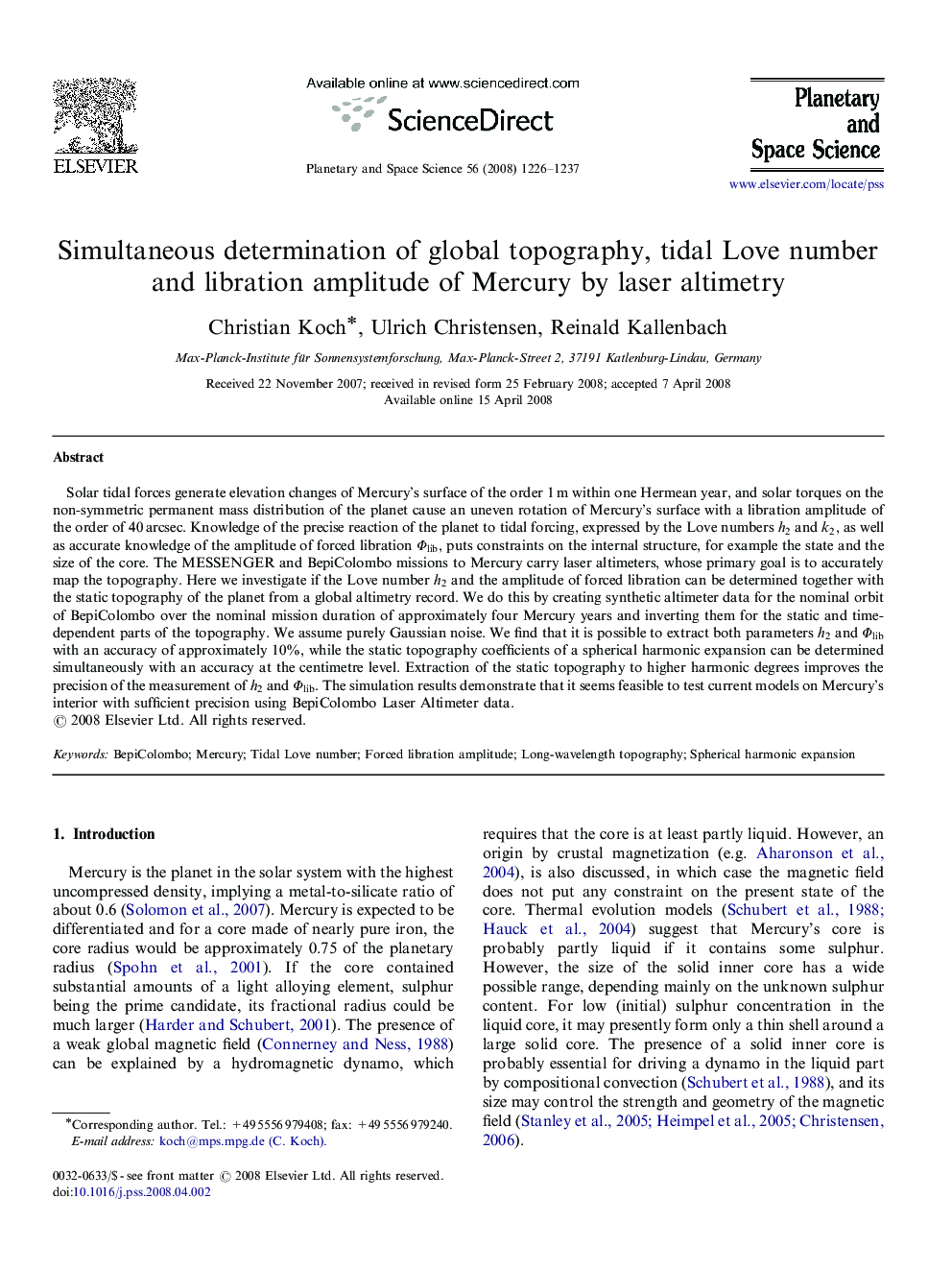| Article ID | Journal | Published Year | Pages | File Type |
|---|---|---|---|---|
| 1782679 | Planetary and Space Science | 2008 | 12 Pages |
Abstract
Solar tidal forces generate elevation changes of Mercury's surface of the order 1 m within one Hermean year, and solar torques on the non-symmetric permanent mass distribution of the planet cause an uneven rotation of Mercury's surface with a libration amplitude of the order of 40 arcsec. Knowledge of the precise reaction of the planet to tidal forcing, expressed by the Love numbers h2 and k2, as well as accurate knowledge of the amplitude of forced libration Φlib, puts constraints on the internal structure, for example the state and the size of the core. The MESSENGER and BepiColombo missions to Mercury carry laser altimeters, whose primary goal is to accurately map the topography. Here we investigate if the Love number h2 and the amplitude of forced libration can be determined together with the static topography of the planet from a global altimetry record. We do this by creating synthetic altimeter data for the nominal orbit of BepiColombo over the nominal mission duration of approximately four Mercury years and inverting them for the static and time-dependent parts of the topography. We assume purely Gaussian noise. We find that it is possible to extract both parameters h2 and Φlib with an accuracy of approximately 10%, while the static topography coefficients of a spherical harmonic expansion can be determined simultaneously with an accuracy at the centimetre level. Extraction of the static topography to higher harmonic degrees improves the precision of the measurement of h2 and Φlib. The simulation results demonstrate that it seems feasible to test current models on Mercury's interior with sufficient precision using BepiColombo Laser Altimeter data.
Related Topics
Physical Sciences and Engineering
Earth and Planetary Sciences
Geophysics
Authors
Christian Koch, Ulrich Christensen, Reinald Kallenbach,
